State of Unrest
This past year and a half has been tumultuous, as was expected by many when a man lacking basic humanitarian values was elected president of the US. With a multitude of shootings, families being separated at the border, a prejudiced travel ban, police brutality, an increased attack on reproductive rights, and much more, tens of thousands of Americans have been compelled to stand up against these once-unthinkable occurrences. These books discuss a similar time of American fear, anger, and unrest that may inspire you to speak out and fight against the injustices happening in the United States right now—-as with the sixties, these issues are not partisan ones, they are human ones.
1968
The Rise and Fall of the New American Revolution
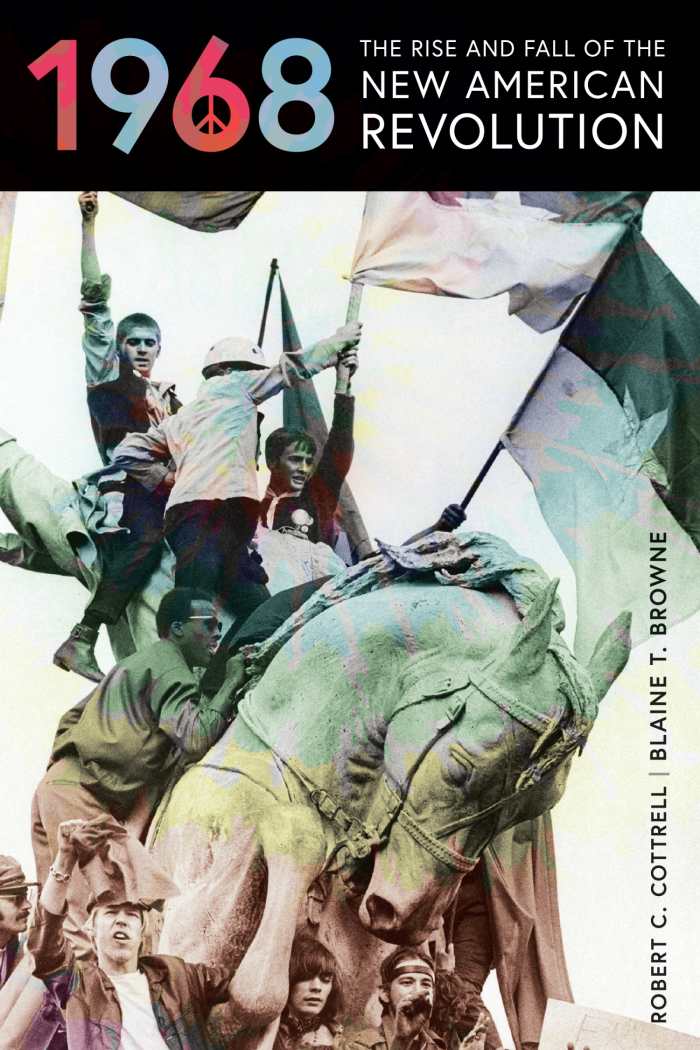
Robert C. Cottrell
Blaine T. Browne
Rowman & Littlefield
Hardcover $38.00 (324pp)
978-1-5381-0775-1
Buy: Local Bookstore (Bookshop)
Robert C. Cottrell and Blaine T. Browne’s book is a reminder that the year 1968 saw the United States on the brink of a revolution, one that was virtually apocalyptic in scope. Race riots led to torched American cities, and outrage and rebellion against the Vietnam War prompted student revolts on campuses across the land. Conspiracy trials were held in an attempt to halt the radical challenge to authority. Major political figures and other leaders were gunned down, with the images broadcast to a horrified population.
It was a time of extremes. Cottrell and Browne show how the events that shattered the belief in “US invincibility” unfolded against the backdrop of a great generational divide and global unrest, contrasted with the pull to nonviolence and peace, free love, and the rise of communal and back-to-the-land living, all topped off with a good dose of sex, drugs, and rock ‘n’ roll.
Remembered here, the sixties also saw the second wave of the feminist movement and its more radical members’ claim that the real enemy was not war, the draft, the government, or racial issues, but men. Calls for women to rebel against patriarchy by remaining single or taking periodic sabbaticals from married life, living in all-female communes, learning karate, and practicing self-imposed celibacy resounded. And, while 1968 marked a turning point for American environmentalism with the passage of the Wild and Scenic Rivers and National Trails System acts, it also saw the unveiling of some frighteningly draconian ideas on population control.
The year 1968 “added more to a sense of unease, disillusionment, and distrust of government institutions than any other year during the turbulent decade and a half that followed the start of the 1960s,” Cottrell and Browne write. But it also brought a “small but bright glimmer of hope” that continues to light the path today.
KRISTINE MORRIS (June 27, 2018)
The Bad Sixties
Hollywood Memories of the Counterculture, Antiwar, and Black Power Movements
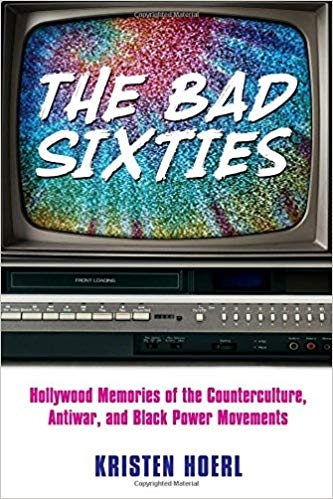
Kristen Hoerl
University Press of Mississippi
Hardcover $70.00 (192pp)
978-1-4968-1723-5
Buy: Local Bookstore (Bookshop)
Kristen Hoerl’s The Bad Sixties examines Hollywood’s take on 1960s America. It reveals that the entertainment industry, which could have been a potent force for progress, dropped the ball by avoiding serious engagement with the powerful, radical ideas that moved people to take to the streets. Instead, she says, it chose to focus on what it saw as the breakdown of “traditional American values.” The result was a distorted, stereotype-ridden picture of the decade’s social movements and its leaders—disturbing, considering the important role that film and television play in molding the attitudes of new generations.
Citing several popular television shows and films of the era, Hoerl shows how they contributed to the “bad” image of the 1960s, portraying it as a nation-dividing decade marked by sexual experimentation and drug use as much as it was by antiwar protests, urban riots, and the rise of feminism.
She argues that there was much of real value going on, including the exploration of ways in which citizens could participate in their democracy in a time when their voices were going unheard, and declares that the dismissive, even hostile attitude of Hollywood and television toward the issues of the sixties contributed to a kind of “selective amnesia” surrounding the reasons for its social conflicts and rebellions. As a result, generations born after that pivotal decade will find, in films, neither accurate information nor the inspiration they need to engage in their own activism.
Hoerl shows how Hollywood’s characterization of the sixties as “bad” has hindered the progress that could have been made with the help of potent reminders of the passion, anger, and belief in the possibility of change that characterized the decade.
KRISTINE MORRIS (June 27, 2018)
Ballots and Bullets
Black Power Politics and Urban Guerrilla Warfare in 1968 Cleveland
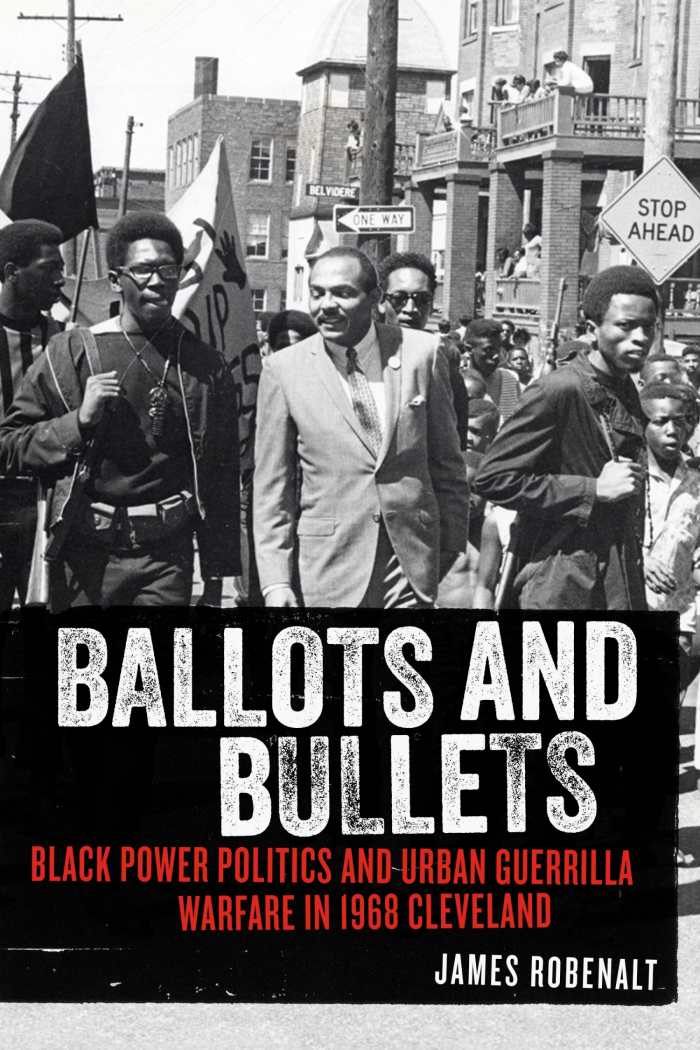
James Robenalt
Chicago Review Press
Hardcover $27.99 (384pp)
978-0-89733-703-8
As recalled in Ballots and Bullets, July 23, 1968, was a night of terror in Cleveland, Ohio. Six people were killed and at least fifteen wounded as police battled black nationalists in the beginning of days of fierce rioting. The cause is still shrouded in mystery.
James Robenalt exposes the roots of the violence in Cleveland, the first major American city to elect a black man as mayor, and one prominent in the civil rights movement. Cleveland hosted Rev. Dr. Martin Luther King, standing for Christian faith, nonviolence, and integration, in 1963, as well as Malcolm X and his black Muslims, who advocated for racial separation and being armed, in 1964.
The book asks some hard questions, foremost among them that of why, fifty years later, the racial divide and the neglect of inner cities is still as bad, or worse, than it was in 1968? And why does police brutality, including the murder of unarmed black citizens, go unpunished?
“Racism in America has its own peculiar pathology,” writes Robenalt, citing how Americans are in denial about the degree to which it permeates the culture, politics, economics, justice system, and relationships at all levels of society.
“The heartbreak is that in 1968 we had made a start; we had taken a first step on honestly acknowledging our nation’s racial sickness, and we at least groped for solutions,” he writes, suggesting that massive investment in the nation’s inner cities and antipoverty programs, and enforcement of gun laws and strict regulation of gun ownership, might be good places to start anew.
“We cannot expect our police to solve the problems of poverty and racism. That is a job for all Americans,” Robenalt writes, calling on all to recognize their fellow citizens as brothers and sisters and act accordingly.
KRISTINE MORRIS (June 27, 2018)
The Contest
The 1968 Election and the War for America’s Soul
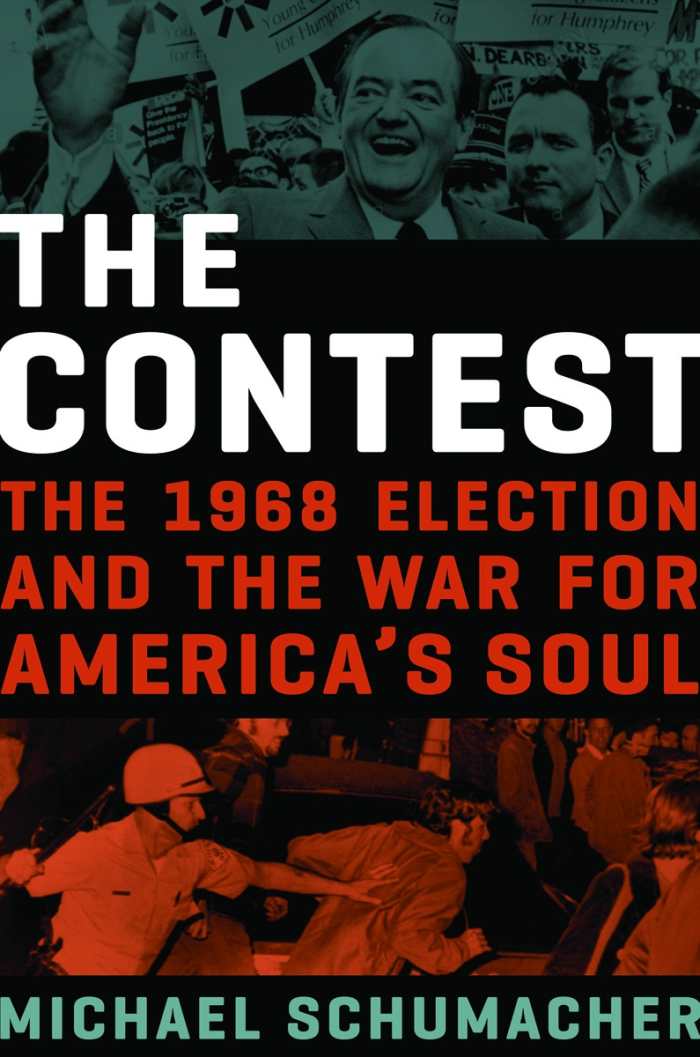
Michael Schumacher
University of Minnesota Press
Hardcover $34.95 (560pp)
978-0-8166-9289-7
In a very real sense, the presidential election of 1968 was a battle for America’s soul. Taking place against the backdrop of a protracted and unpopular war overseas and assassinations, student protests, race riots, and cities in flames at home, this election—one of the closest, most bitterly contested in US history—would decide whether the country would respond by leaning in the direction of social justice and Franklin D. Roosevelt’s New Deal policies or by imposing a regime of law and order.
In The Contest, Michael Schumacher not only covers the events that made headlines in 1968 but takes an intimate, moving, and often surprising behind-the-scenes look at the major players who made it a pivotal year in American history. We learn that Lyndon Johnson, suffering from nightmares and insomnia, would shuffle down the White House hallways with a small flashlight to calm himself by touching the portrait of Woodrow Wilson; how Robert Kennedy, though haunted by the fear of assassination, loved physical contact with his supporters and would not give it up despite the danger; of Richard Nixon listing the pros and cons of running for president on a yellow legal pad with entries that included “Personally, I have had it” and “I don’t give a damn”; and of quiet family conversations that decided a candidate’s direction. Schumacher follows each candidate from preprimary events and the chaos surrounding the conventions to the general election that proved to be a turning point in America’s history.
The end result is a rigorously researched and detailed book that not only conveys all the volatility, rage, intrigue, and belief in the possibility of change that characterized the election of 1968 but provides a deeply human record of the lives of the powerful figures whose decisions would chart the course of history.
KRISTINE MORRIS (June 27, 2018)
The Civil Rights Revolution
We the People, Volume 3
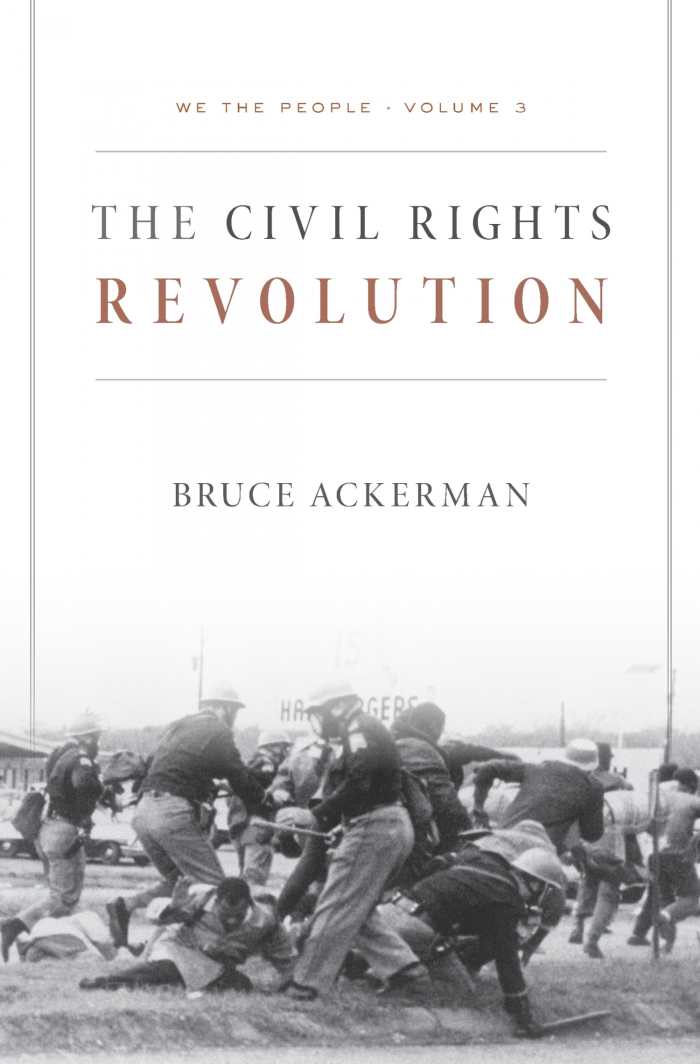
Bruce Ackerman
Belknap Press
Softcover $21.95 (432pp)
978-0-674-98394-6
Buy: Local Bookstore (Bookshop)
Many of today’s American political arguments hinge on interpretations of the Constitution, which has, throughout history, been formally amended to reflect the needs of changing times. Bruce Ackerman’s book focuses on the ways in which “constitutional moments,” created when engaged citizens mobilize in focused and sustained movements for change, result in the enactment of statutes that reflect “the considered judgment” of the American people and institute a new “constitutional regime” affecting how the Constitution is interpreted and applied.
The book, directed toward legal professionals but enlightening for all engaged citizens, makes a compelling case for the argument that constitutional change is not limited to the formal Article V amendment process but can occur through the enactment of statutes; the civil rights statutes of the mid-twentieth century are a good example. Ackerman shows how such statutes serve to create a new constitutional regime and explains the stages of the process, from revolution to mass movement to statutory law.
Beyond meticulous and intricate analyses of legal texts, the book reveals little-known, often surprising information on members of various branches of government and the civil rights movement. Beginning with the era of Brown v. Board of Education, it culminates with Lyndon Johnson and the Supreme Court’s work to protect all citizens from racial discrimination.
While today’s challenges may cast doubt on the validity of America’s tradition of popular sovereignty, landmark statutes enacted as a result of the efforts of “We the People” have resulted in the expansion of voting rights, institution of fair housing laws, desegregation of schools, repeal of racial miscegenation laws, enactment of gay rights protections, and more. To protect these gains, Ackerman compellingly suggests the creation of a “Third Reconstruction” phase for the United States in which equal opportunity could be more fully realized.
KRISTINE MORRIS (June 27, 2018)
The Global Imagination of 1968
Revolution and Counterrevolution
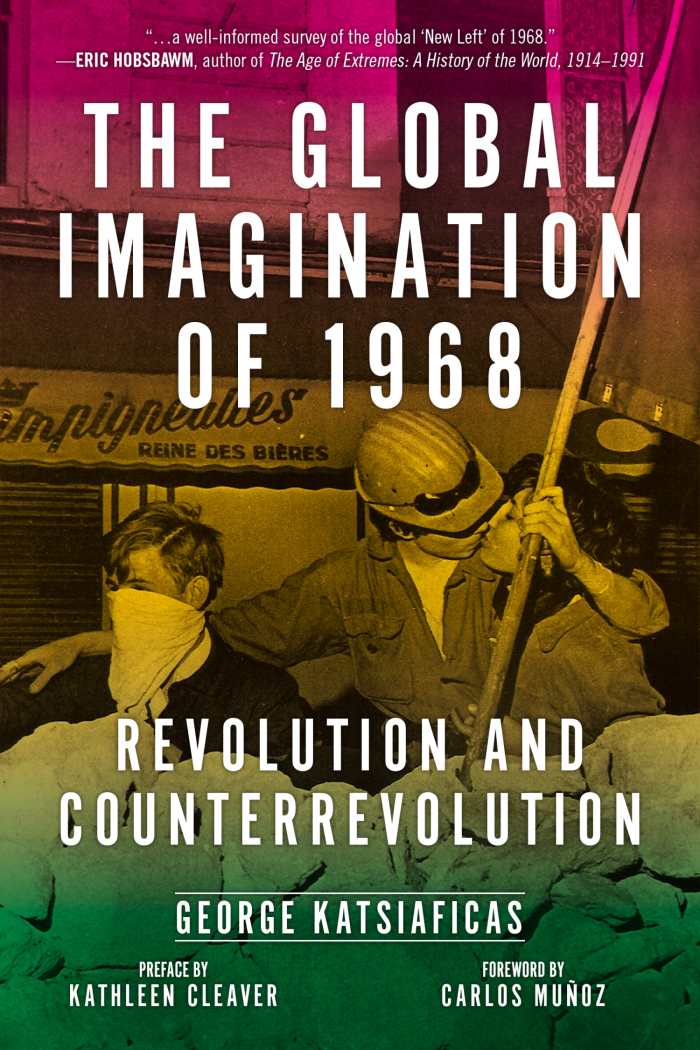
George Katsiaficas
PM Press
Softcover $24.95 (360pp)
978-1-62963-439-5
Buy: Local Bookstore (Bookshop)
A world without hunger, without war or an international arms race, without militarized nation-states and arbitrary authorities: even now, in the twenty-first century, these goals seem out of reach, but that we can envision them at all is a legacy of the global imagination that emerged to rock the world half a century ago.
In 1968, world-historical social movements erupted in nearly every country; people were seeking freedom, not only from grinding poverty and social injustice, but to create themselves anew. The New Left, with its call for “individual autonomy amidst community” and an end to racial, political, economic, and patriarchal domination, had global appeal.
More than that, global insurgencies benefited from what George Katsiaficas calls the “eros effect,” in which “people’s ties to each other become more significant than patriotic allegiances or class and racial identities.” This term makes the concept of the “global imagination” of 1968 clear, encapsulating how, despite enormous cultural and political differences between nations, revolutionaries everywhere stood together in their dreams of freedom, taking action according to similar revolutionary norms and values and sharing a sense of solidarity.
Katsiaficas provides today’s activists with the wider historical context for action. The Global Imagination of 1968 is a guide to mobilizing the creativity to resist, disrupt, and change the lingering racism and patriarchal structures, attitudes, and economic systems that still restrict our freedom—a challenging task now that the organs of social control are militarized and often act with impunity.
Despite what appears to have been the failure of the New Left, Katsiaficas declares that its passionate challenge to the establishment left an amazing legacy of global progress and the advancement of values and ideals that can fire the imagination and nurture the dreams of a new generation of activists.
KRISTINE MORRIS (June 27, 2018)
Kara Hansen
